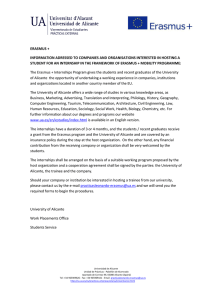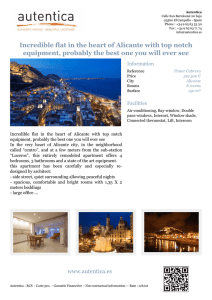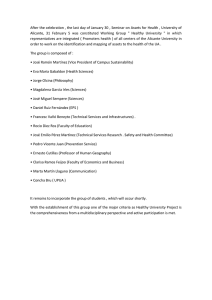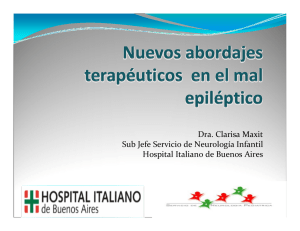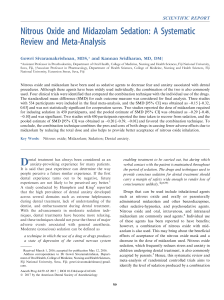from the pleural liquid as in our case. We conclude that, although
Anuncio
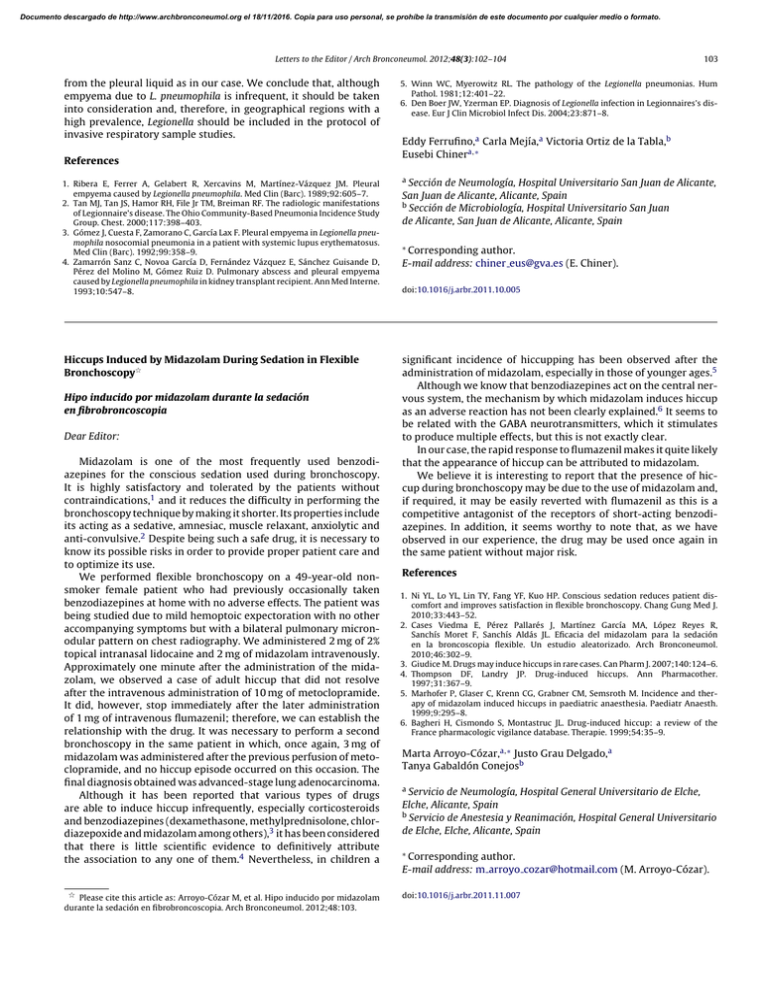
Documento descargado de http://www.archbronconeumol.org el 18/11/2016. Copia para uso personal, se prohíbe la transmisión de este documento por cualquier medio o formato. Letters to the Editor / Arch Bronconeumol. 2012;48(3):102–104 from the pleural liquid as in our case. We conclude that, although empyema due to L. pneumophila is infrequent, it should be taken into consideration and, therefore, in geographical regions with a high prevalence, Legionella should be included in the protocol of invasive respiratory sample studies. References 1. Ribera E, Ferrer A, Gelabert R, Xercavins M, Martínez-Vázquez JM. Pleural empyema caused by Legionella pneumophila. Med Clin (Barc). 1989;92:605–7. 2. Tan MJ, Tan JS, Hamor RH, File Jr TM, Breiman RF. The radiologic manifestations of Legionnaire’s disease. The Ohio Community-Based Pneumonia Incidence Study Group. Chest. 2000;117:398–403. 3. Gómez J, Cuesta F, Zamorano C, García Lax F. Pleural empyema in Legionella pneumophila nosocomial pneumonia in a patient with systemic lupus erythematosus. Med Clin (Barc). 1992;99:358–9. 4. Zamarrón Sanz C, Novoa García D, Fernández Vázquez E, Sánchez Guisande D, Pérez del Molino M, Gómez Ruiz D. Pulmonary abscess and pleural empyema caused by Legionella pneumophila in kidney transplant recipient. Ann Med Interne. 1993;10:547–8. Hiccups Induced by Midazolam During Sedation in Flexible Bronchoscopy夽 Hipo inducido por midazolam durante la sedación en fibrobroncoscopia Dear Editor: Midazolam is one of the most frequently used benzodiazepines for the conscious sedation used during bronchoscopy. It is highly satisfactory and tolerated by the patients without contraindications,1 and it reduces the difficulty in performing the bronchoscopy technique by making it shorter. Its properties include its acting as a sedative, amnesiac, muscle relaxant, anxiolytic and anti-convulsive.2 Despite being such a safe drug, it is necessary to know its possible risks in order to provide proper patient care and to optimize its use. We performed flexible bronchoscopy on a 49-year-old nonsmoker female patient who had previously occasionally taken benzodiazepines at home with no adverse effects. The patient was being studied due to mild hemoptoic expectoration with no other accompanying symptoms but with a bilateral pulmonary micronodular pattern on chest radiography. We administered 2 mg of 2% topical intranasal lidocaine and 2 mg of midazolam intravenously. Approximately one minute after the administration of the midazolam, we observed a case of adult hiccup that did not resolve after the intravenous administration of 10 mg of metoclopramide. It did, however, stop immediately after the later administration of 1 mg of intravenous flumazenil; therefore, we can establish the relationship with the drug. It was necessary to perform a second bronchoscopy in the same patient in which, once again, 3 mg of midazolam was administered after the previous perfusion of metoclopramide, and no hiccup episode occurred on this occasion. The final diagnosis obtained was advanced-stage lung adenocarcinoma. Although it has been reported that various types of drugs are able to induce hiccup infrequently, especially corticosteroids and benzodiazepines (dexamethasone, methylprednisolone, chlordiazepoxide and midazolam among others),3 it has been considered that there is little scientific evidence to definitively attribute the association to any one of them.4 Nevertheless, in children a 夽 Please cite this article as: Arroyo-Cózar M, et al. Hipo inducido por midazolam durante la sedación en fibrobroncoscopia. Arch Bronconeumol. 2012;48:103. 103 5. Winn WC, Myerowitz RL. The pathology of the Legionella pneumonias. Hum Pathol. 1981;12:401–22. 6. Den Boer JW, Yzerman EP. Diagnosis of Legionella infection in Legionnaires’s disease. Eur J Clin Microbiol Infect Dis. 2004;23:871–8. Eddy Ferrufino,a Carla Mejía,a Victoria Ortiz de la Tabla,b Eusebi Chinera,∗ a Sección de Neumología, Hospital Universitario San Juan de Alicante, San Juan de Alicante, Alicante, Spain b Sección de Microbiología, Hospital Universitario San Juan de Alicante, San Juan de Alicante, Alicante, Spain ∗ Corresponding author. E-mail address: chiner [email protected] (E. Chiner). doi:10.1016/j.arbr.2011.10.005 significant incidence of hiccupping has been observed after the administration of midazolam, especially in those of younger ages.5 Although we know that benzodiazepines act on the central nervous system, the mechanism by which midazolam induces hiccup as an adverse reaction has not been clearly explained.6 It seems to be related with the GABA neurotransmitters, which it stimulates to produce multiple effects, but this is not exactly clear. In our case, the rapid response to flumazenil makes it quite likely that the appearance of hiccup can be attributed to midazolam. We believe it is interesting to report that the presence of hiccup during bronchoscopy may be due to the use of midazolam and, if required, it may be easily reverted with flumazenil as this is a competitive antagonist of the receptors of short-acting benzodiazepines. In addition, it seems worthy to note that, as we have observed in our experience, the drug may be used once again in the same patient without major risk. References 1. Ni YL, Lo YL, Lin TY, Fang YF, Kuo HP. Conscious sedation reduces patient discomfort and improves satisfaction in flexible bronchoscopy. Chang Gung Med J. 2010;33:443–52. 2. Cases Viedma E, Pérez Pallarés J, Martínez García MA, López Reyes R, Sanchís Moret F, Sanchís Aldás JL. Eficacia del midazolam para la sedación en la broncoscopia flexible. Un estudio aleatorizado. Arch Bronconeumol. 2010;46:302–9. 3. Giudice M. Drugs may induce hiccups in rare cases. Can Pharm J. 2007;140:124–6. 4. Thompson DF, Landry JP. Drug-induced hiccups. Ann Pharmacother. 1997;31:367–9. 5. Marhofer P, Glaser C, Krenn CG, Grabner CM, Semsroth M. Incidence and therapy of midazolam induced hiccups in paediatric anaesthesia. Paediatr Anaesth. 1999;9:295–8. 6. Bagheri H, Cismondo S, Montastruc JL. Drug-induced hiccup: a review of the France pharmacologic vigilance database. Therapie. 1999;54:35–9. Marta Arroyo-Cózar,a,∗ Justo Grau Delgado,a Tanya Gabaldón Conejosb a Servicio de Neumología, Hospital General Universitario de Elche, Elche, Alicante, Spain b Servicio de Anestesia y Reanimación, Hospital General Universitario de Elche, Elche, Alicante, Spain ∗ Corresponding author. E-mail address: m arroyo [email protected] (M. Arroyo-Cózar). doi:10.1016/j.arbr.2011.11.007
